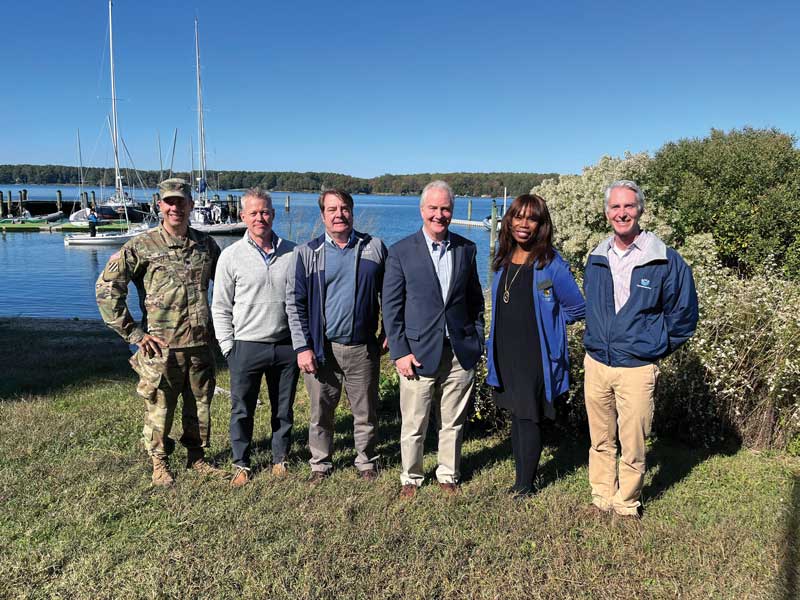The core partners in the Maryland Oyster Restoration Interagency Team—NOAA, the Maryland Department of Natural Resources, U.S. Army Corps of Engineers, and Oyster Recovery Partnership—hosted an event on October 21 along the St. Mary’s River to celebrate completion of the initial oyster reef restoration in the St. Mary’s River. The team also highlighted the completion of the Tred Avon and Little Choptank Rivers projects, which had been completed in recent years but not yet celebrated in person due to Covid.

These efforts are part of the world’s largest oyster restoration project. Across the Chesapeake Bay, agencies and organizations have been teaming up to bring back oyster reefs—and the many benefits they bring. Oysters filter the water, grow in reefs that provide habitat for many species, and support recreation and healthy fisheries.
Thanks to this restoration work, there are now 60 acres of healthy, restored oyster reefs in the St. Mary’s River. In the Little Choptank, a project completed in 2020, 359 acres were restored, with 1.85 billion seeds planted. In the Tred Avon, a project completed in 2021, 130 acres were restored, with 926 million seeds planted.
These reefs are part of the Chesapeake Bay Program’s goal to restore oysters in 10 Chesapeake Bay tributaries by 2025. Besides the ones mentioned, tributaries in Maryland include Harris Creek and the Manokin River; and in Virginia the Great Wicomico River, Lafayette River, Lower York River, Lynnhaven River, and Piankatank River.
Speakers at the event included Senator Chris Van Hollen; Sean Corson, director of NOAA Chesapeake Bay Office and chair of the Chesapeake Bay Program’s Sustainable Fisheries Goal Implementation Team; Lieutenant Colonel David Myers, USACE, Deputy Commanding Officer, U.S. Army Corps of Engineers’ Baltimore District; Matt Fleming, acting assistant secretary of Aquatic Resources, Maryland Department of Natural Resources; Ward Slacum, executive director of the Oyster Recovery Partnership; and Adam Werblow, director of St. Mary’s College Waterfront Center and head varsity sailing coach.
For more information, visit fisheries.noaa.gov/topic/chesapeake-bay/oyster-restoration.